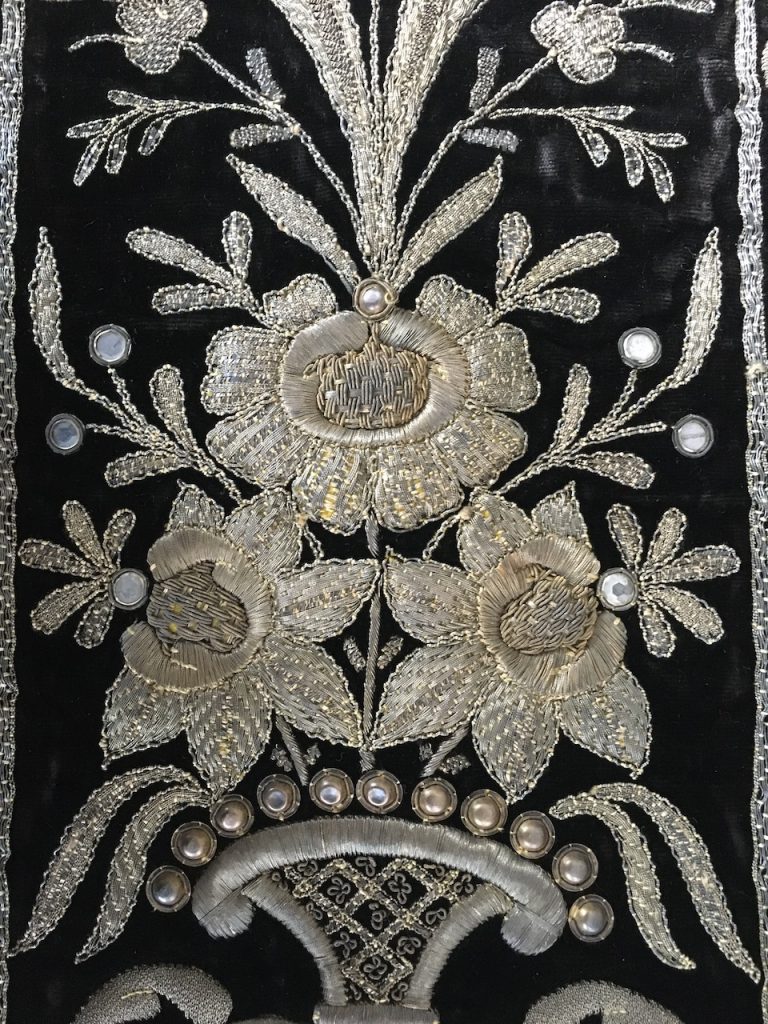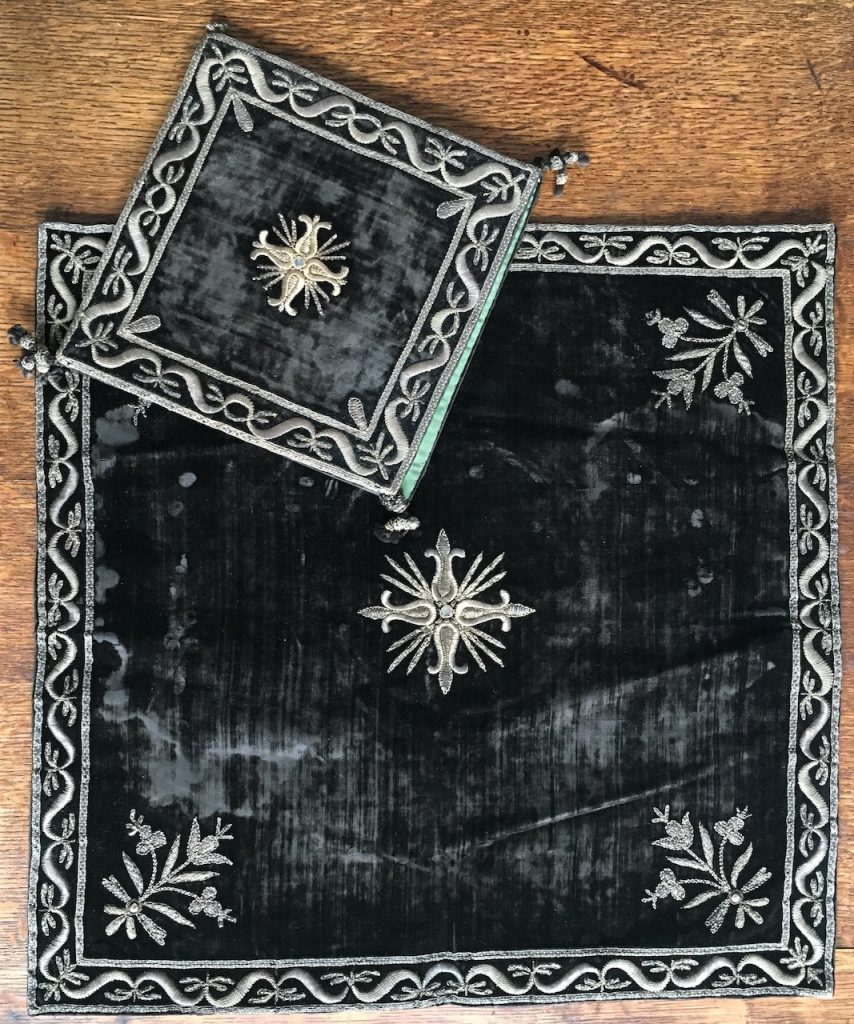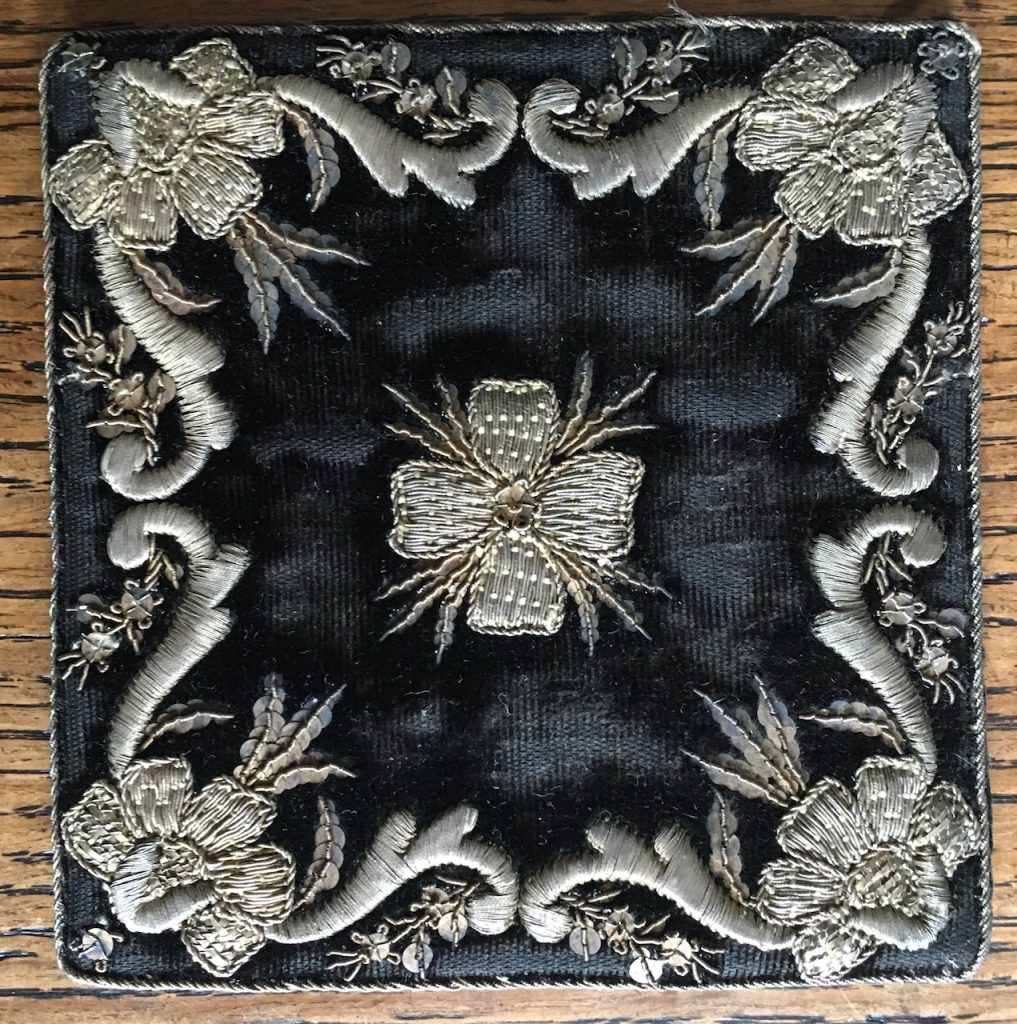Threads of Heaven
You never know what you’ll find in Hampstead. I’ve found open hearts and minds, wonderful conversations, beautiful worship, a heart for social justice, deep prayerfulness, and all sorts of other things in this parish that make me thankful every day.
One day, amongst the treasures (and, well, definitely-not-treasures) of Flask Walk, I also found this (with Esther Fitzgerald’s expert eye and quick messages to get me to go take a look!).
It is a black velvet full high mass set, embroidered with silver and sequins. The most elaborate part of the overall embroidery is an image of the Lamb of God on the front of the chasuble. There are also flowers, crosses, and flowing details that highlight the shape and function of each piece. It’s very likely that it’s Spanish and was made in the nineteenth century.
Black is for funerals and requiem masses. In our church and many others, we tend to use purple for this now, but black has a special place in the history of the Church. It’s likely that it’s survived so beautfiully because it would be used a lot less than green, which is used for so many weeks of Ordinary Time through the year.
Although there are variations and changes throughout Christian history, the main colours for textiles in the Christian year are green, purple, red, and white (or gold). Sometimes you see blue for Advent (following the medieval Sarum tradition) and we also have our ‘Lenten Array’, which is plain canvas with a subtle grey motif symbolising the crucifixion.
In my black textile set, there is a chasuble, stole, maniple (which goes over the arm, a bit like an old-fashioned waiter), burse, veil, and pall. Except for the maniple, our own vestment sets have the same items. The style is different, but the idea is exactly the same.
This set is now, sadly, in several pieces. I think it may have been cut apart to be displayed in a frame – a tempting thing to do, certainly! However, just before lockdown I planned to take it to a textile conservator to lovingly and carefully put it back together. One day I hope to see it restored and to wear it. When I do, I will always give thanks for the amazing treasures that one finds in Hampstead (and for Esther’s eye for beauty!).



